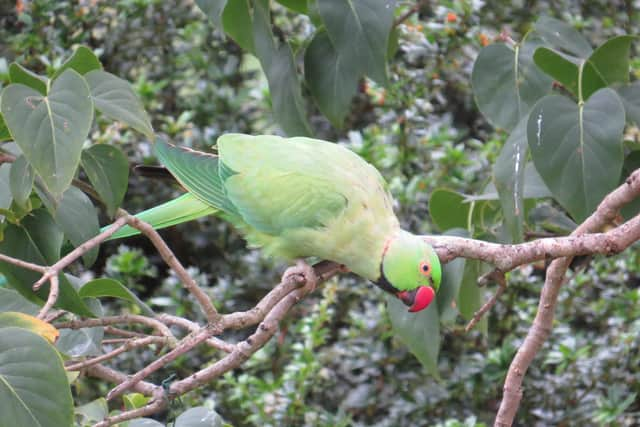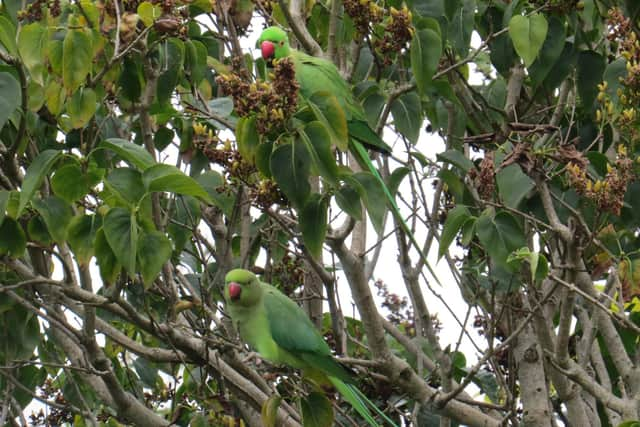Who's a pretty boy then? Green parakeets snapped in Aylesbury garden
and live on Freeview channel 276
Eagle-eyed resident Colin Metcalfe, who sent in the photos, said: “I have just witnessed two ring-necked parakeets visit our garden feeders in Bedgrove.
"As you probably know, they are slowly spreading out from London and this is the first time I have seen them this far north.”
Advertisement
Hide AdAdvertisement
Hide AdHowever, this is far from the first sighting of ring-necked parakeets in Aylesbury Vale.


According to the Going Birding in Buckinghamshire website, they have been sighted in Aylesbury on September 6 and in Prestwood on September 5.
There have also been a number of sightings in the south of the county, including Beaconsfield, Little Chalfont and Fulmer – and they have even been seen flying over the Furzton Estate, in Milton Keynes.
According to the Berks, Bucks and Oxon Wildlife Trust (BBOWT), the bright green ring-necked parakeet is an escapee and the UK’s only naturalised parrot.
Advertisement
Hide AdAdvertisement
Hide AdMeasuring 40cm long, with a wingspan of 45cm, they are the most northerly breeding parrot in the world, with an average lifespan of 15 to 30 years.


Originally from Africa and southern Asia, ring-tailed parakeets were kept as pets in the UK. Some escaped into the wild, and populations have become naturalised in the south-east especially, aided by warmer winters.
They nest in holes in trees in gardens and parkland, and are often found in noisy, roosting flocks of hundreds of birds.
As a bright green parrot a very long, narrow tail and a bright red bill, they are easily identified.
Advertisement
Hide AdAdvertisement
Hide AdThe following extract from an article on The Parrot Society website explains why ring-necked parakeets have survived so well in the wild in the UK:
“The native habitat of the Indian sub-species in the foothills of the Himalayas makes them readily adapted to the cold weather of British winters.
"They breed early in the year, starting to nest in January in holes in tree trunks, long before birds such as starlings, owls or woodpeckers, that use similar sites, are ready to breed."They are pugnacious, bold, and willing to eat most grains, seeds, buds, leaves, berries and nuts. Thus they have a wide choice of food sources, and take advantage of the numerous bird tables and feeders put out in suburban and urban gardens.”